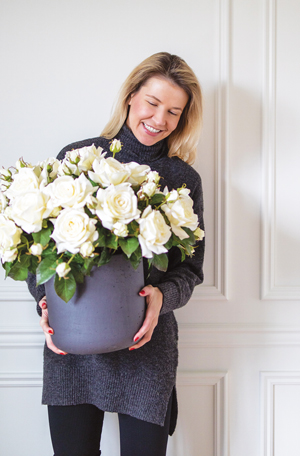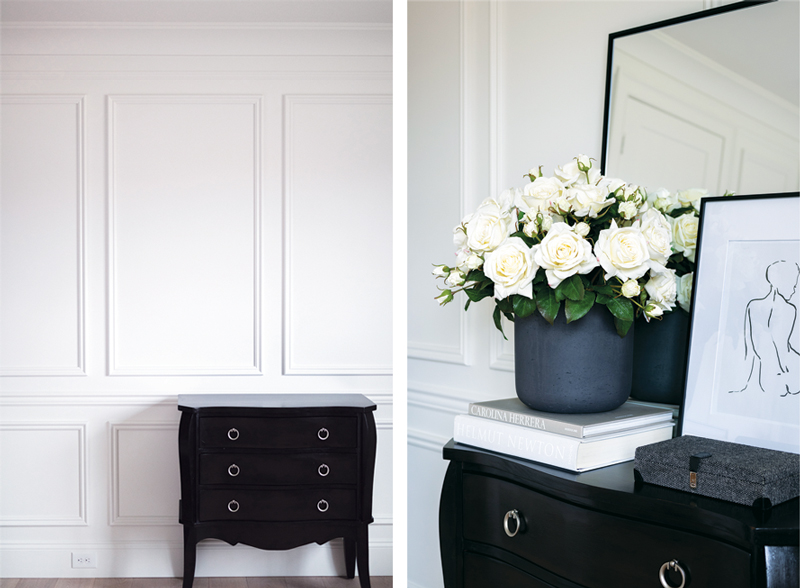Conversations with Kate: Time for Trim
| Interview by Ren MillerArchitectural moldings add definition and interest to rooms
Are you looking to add character to your plain-Jane walls? Molding and paneling will add instant architectural appeal, but you may have a lot of questions if you haven’t worked with them before. Kate Rumson has some tips based on her experience building and renovating houses, including her new home in central New Jersey. Kate is the founder and creative director of The Real Houses of Instagram (@the_real_houses_of_ig). Design NJ has been sharing updates on her new home in this column.
 REN: Why add wall molding/paneling?
REN: Why add wall molding/paneling?
KATE: Unless you are lucky enough to live in an older home appointed with extensive trim and molding from floor to ceiling, you may find yourself feeling like it’s lacking in architectural character. The best way to add character and visual interest to a new home is by installing wall molding or paneling.
REN: Can wall molding/paneling be installed in any home or only in colonial and other traditional styles?
KATE: There are many different molding profiles designed for different architectural styles. I recommend looking through an online molding catalog such as the one by Novo Building Products — that’s the brand of molding we installed in our new home, and I referenced their catalogs quite often while I was choosing molding and paneling for our walls. With countless options of classic, modern, rustic or craftsman molding available today, there’s something for every architectural style.
REN: Does it work in any room?
KATE: Absolutely! When we think of wall molding, we often picture formal spaces such as living and dining rooms, but molding and paneling can look incredible in bedrooms, bathrooms and even hallways.
REN: I’ve been in some homes where the crown molding was underwhelming and others where it was beautiful and impactful. Why does it look so different?
KATE: When choosing crown molding, it’s important to pay attention not only to the shape and style of different molding profiles, but also the size and scale of the room where it’s going to be installed. Large rooms with high ceilings will need larger molding, and I always recommend layering crown molding by combining at least two different pieces to create a more interesting and impactful look.
REN: What is the ideal height of baseboards and does it vary based on the architecture of the home?
KATE: I say go as high as the budget allows! I wouldn’t recommend anything smaller than 5 inches for rooms with 9-foot ceilings, or 7 inches for rooms with 10-foot-plus ceilings.

LEFT | Moldings are available today to complement any architectural style, from colonial to modern, craftsman to rustic. Note the unobtrusive horizontal placement of the electrical outlet in the baseboard. RIGHT | The lines of molding applied to a wall add definition and help to frame furnishings.
REN: Wood or MDF (medium-density fiberboard) moldings?
KATE: It depends on your budget and whether you plan on painting or staining your molding. For painted molding, it’s ideal to work with poplar because of its smooth and flawless texture, but poplar molding for an entire house could get costly. Pine molding is more economical, but pine often has a lot of imperfections. So if budget is a concern, I prefer to work with MDF molding.
REN: Should the molding be painted the same color as the walls?
KATE: There’s no right or wrong answer to this question. It all comes down to personal preference. However, I prefer it when the molding and the walls are painted the same color because that creates a beautiful but understated background for all other design elements in the room.
REN: What is the best way to install moldings around electrical outlets?
KATE: I recommend installing electrical outlets horizontally in baseboards — this way they won’t interfere with any wall treatment.
